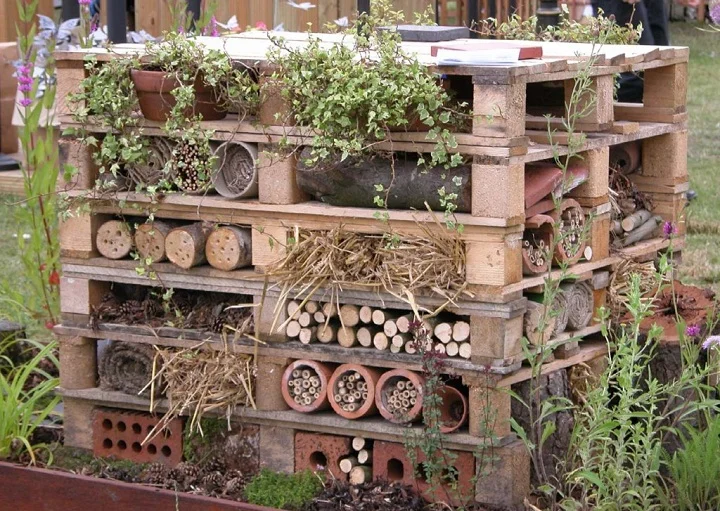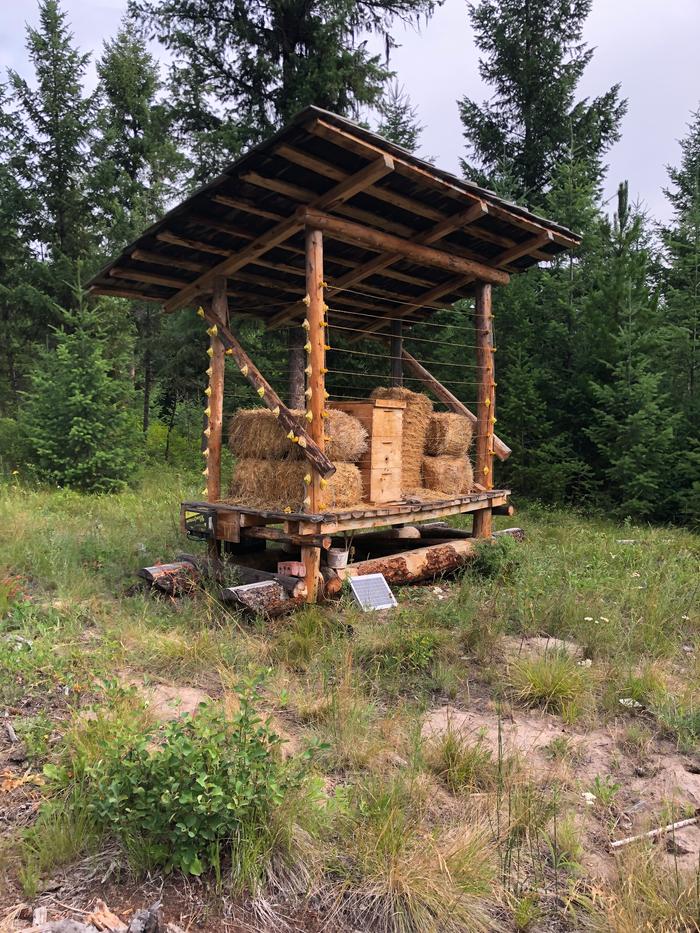
 10
10










Invasive plants are Earth's way of insisting we notice her medicines. Stephen Herrod Buhner
Everyone learns what works by learning what doesn't work. Stephen Herrod Buhner
 12
12




Moderator, Treatment Free Beekeepers group on Facebook.
https://www.facebook.com/groups/treatmentfreebeekeepers/





 11
11








Invasive plants are Earth's way of insisting we notice her medicines. Stephen Herrod Buhner
Everyone learns what works by learning what doesn't work. Stephen Herrod Buhner
 11
11




forest gardening in the Ozarks on 18 acres. 2 high tunnels, 3 acres of young food forests, tiny cabin living. solar off grid. building a straw bale house this summer - come intern with us! established 2016.
 7
7




Once you make a decision, the universe conspires to make it happen. - Ralph Waldo Emerson
 9
9




forest gardening in the Ozarks on 18 acres. 2 high tunnels, 3 acres of young food forests, tiny cabin living. solar off grid. building a straw bale house this summer - come intern with us! established 2016.
 8
8




Once you make a decision, the universe conspires to make it happen. - Ralph Waldo Emerson
 10
10




 6
6




"Nature is not a place to visit. It is home." --Gary Snyder
 6
6




Andrea Locke wrote:I wish I was confident enough in my bee handling to capture swarms! Oh well, maybe someday.
I kept bees for several years in a forest edge in a previous property and this week have just set up a new hive after a hiatus of about a decade from beekeeping. Here they are in a clearing of about an acre surrounded by forest.
They are busy working the gardens where we have lots of pollinator plants and have let last year's kale and some early greens go to flower. There are also hundreds of naturalized foxgloves and a few giant rugosa rose bushes in sunny edge areas. And although we have eliminated invasive Scotch broom on our place there is lots growing and flowering next door.
“Uncertainty is an uncomfortable position. But certainty is an absurd one.”
― Voltaire
 10
10




Michael Helmersson wrote:
Andrea Locke wrote:I wish I was confident enough in my bee handling to capture swarms! Oh well, maybe someday.
I kept bees for several years in a forest edge in a previous property and this week have just set up a new hive after a hiatus of about a decade from beekeeping. Here they are in a clearing of about an acre surrounded by forest.
They are busy working the gardens where we have lots of pollinator plants and have let last year's kale and some early greens go to flower. There are also hundreds of naturalized foxgloves and a few giant rugosa rose bushes in sunny edge areas. And although we have eliminated invasive Scotch broom on our place there is lots growing and flowering next door.
The situation you describe here is very similar to what we have on our land. We're on the edge of town, in boreal forest, with only a few neighbouring properties within a half mile radius. We're contemplating bees and wondering if we have the forage to support them, let alone produce a surplus. I had read somewhere a quote saying "Bees in a wood never do good." and it discouraged me. Now I'm wondering what they meant by "wood". We have about 1.5 acres of our land free of big trees and heavily populated by wild and cultivated forage plants, plus fruit bushes, and juvenile fruit trees. I'm hoping you have success to report from your efforts and that you (or someone) can help me comprehend the above quote.
Once you make a decision, the universe conspires to make it happen. - Ralph Waldo Emerson
 3
3




Andrea Locke wrote:
Hi Michael, it makes sense to me that bees would not do as well in an established woodland as in a sunny meadow as there might be limited flowering plants in the shaded understory and what is there might be very seasonal. Cooler temperatures and less daylight might also reduce foraging hours.
My bees did pretty well with about an acre of sunny open ground to forage but I think they could have done better. I have since moved them to our new place where there is more open space but if I had continued to keep bees at the original location would have added some forage plantings to address a couple of seasonal dearths. I think it is particularly important to pay attention to possible deficiencies when the bees are dependent on such a relatively small area and can’t just buzz over to some other yard with different plantings. That said it sounds like your property has a range of diverse flowering plants, there is probably some food for bees in the surrounding boreal forest especially before the canopy closes in spring. In your situation I would go for it. Maybe take care to situating the bees where they will get early morning sun and can warmed up and out and about early in the day.
“Uncertainty is an uncomfortable position. But certainty is an absurd one.”
― Voltaire
 8
8




Argue for your limitations and they are yours forever.
 7
7




Once you make a decision, the universe conspires to make it happen. - Ralph Waldo Emerson
 6
6




In modern times the only right way forward is to come back to nature.
 6
6




Lina
https://catsandcardamom.com
 6
6




Whathever you are, be a good one.
___________________________________
 4
4




Lina Joana wrote:One possible problem regarding the “bees in a wood” quote
Invasive plants are Earth's way of insisting we notice her medicines. Stephen Herrod Buhner
Everyone learns what works by learning what doesn't work. Stephen Herrod Buhner
 6
6




 4
4




Anne Miller wrote:
Lina Joana wrote:One possible problem regarding the “bees in a wood” quote
Please explain what you mean by “bees in a wood” quote as I am not seeing that anywhere.
“Uncertainty is an uncomfortable position. But certainty is an absurd one.”
― Voltaire
 2
2




Michelle Gillian wrote:I would love to make a home for bees in my garden, but do I have to collect honey? Or could I just let them all bee?
“Uncertainty is an uncomfortable position. But certainty is an absurd one.”
― Voltaire
 4
4




Michael Helmersson wrote: We're contemplating bees and wondering if we have the forage to support them, let alone produce a surplus. I had read somewhere a quote saying "Bees in a wood never do good." and it discouraged me. Now I'm wondering what they meant by "wood". We have about 1.5 acres of our land free of big trees and heavily populated by wild and cultivated forage plants, plus fruit bushes, and juvenile fruit trees.
Invasive plants are Earth's way of insisting we notice her medicines. Stephen Herrod Buhner
Everyone learns what works by learning what doesn't work. Stephen Herrod Buhner
 3
3




Anne Miller wrote:
And thank you for clarifying about the bees in the woods.
Did you get bees?
“Uncertainty is an uncomfortable position. But certainty is an absurd one.”
― Voltaire
 3
3




Michelle Gillian wrote:I would love to make a home for bees in my garden, but do I have to collect honey? Or could I just let them all bee?
 3
3




Ed Jo wrote:
I just moved my bees from pasture land to forest last year. So far (fingers crossed) they are doing well. Currently they are about 10 yards inside of a sparse tree line. The thing I like the most about having my bees in the trees is that I no longer have to mow or weed eat around them. I have future plans of setting up a large pollinator garden on another part of my property for them and other pollinators.
 5
5





Mike said, "Someone mentioned possible problems with electric fencing & bees. I lost 3 hives a few years ago to a bear. Big mess, total loss. So we put up an electric fence & started a small orchard inside. Plus added some more bees. No more problems, although the bees have been moved since then.


Janet said, "Emerged from this inviting trail at dusk to a collective buzz. The bees are back!

Invasive plants are Earth's way of insisting we notice her medicines. Stephen Herrod Buhner
Everyone learns what works by learning what doesn't work. Stephen Herrod Buhner
 6
6




Michael Helmersson wrote:
Ed Jo wrote:
I just moved my bees from pasture land to forest last year. So far (fingers crossed) they are doing well. Currently they are about 10 yards inside of a sparse tree line. The thing I like the most about having my bees in the trees is that I no longer have to mow or weed eat around them. I have future plans of setting up a large pollinator garden on another part of my property for them and other pollinators.
Can you tell us what region you're in?
 5
5




Anne Miller wrote:Have you looked at what they do at Wheaton Labs?
“Uncertainty is an uncomfortable position. But certainty is an absurd one.”
― Voltaire
 3
3




Ed Jo wrote:
Michael Helmersson wrote:
Ed Jo wrote:
One thing I do really worry about is branches as well as whole trees falling on my bees. I remove any dead branches that I find and will trim trees as necessary.
That's a good point. It's routine here for trees to fall, and it's rarely the tree that you're expecting to fall. I've been outside during high winds listening to the trees creaking and cracking and had a tree right beside me snap off at the height of my head. I'd probably provide a roof of some sort over the bees that could withstand a falling tree.
Welcome to Permies, by the way.
 8
8






Utah Valley Permaculture Classroom Gardens & Greenhouse FB group
 4
4




Michael Helmersson wrote:
That's a good point. It's routine here for trees to fall, and it's rarely the tree that you're expecting to fall. I've been outside during high winds listening to the trees creaking and cracking and had a tree right beside me snap off at the height of my head. I'd probably provide a roof of some sort over the bees that could withstand a falling tree.
 4
4




David Wieland wrote:
Unless your trees are less than 5 inches in diameter, you'll need to make that roof very strong (maybe with I-beams) to withstand a tree that falls on it.
 2
2




$10.00 is a donation. $1,000 is an investment, $1,000,000 is a purchase.
 5
5





 2
2




Devoured by giant spiders without benefit of legal counsel isn't called "justice" where I come from!
-Amazon Women On The Moon

|
I can't take it! You are too smart for me! Here is the tiny ad:
Play Your Way to a Sustainable Lifestyle: Uncover Permaculture Principles with Each Card
https://gardener-gift.com/
|








